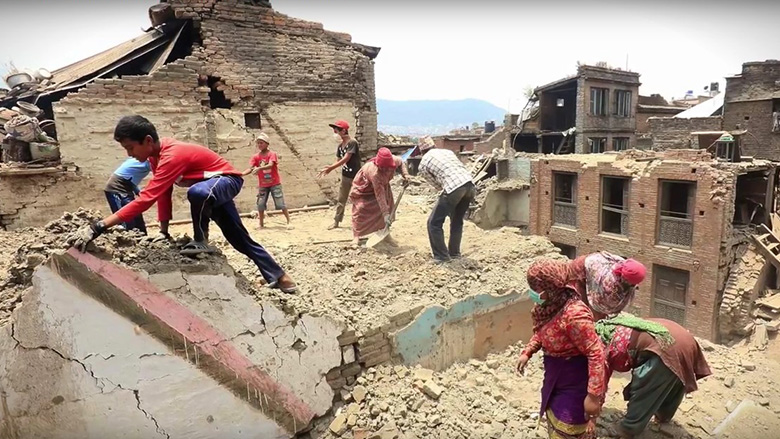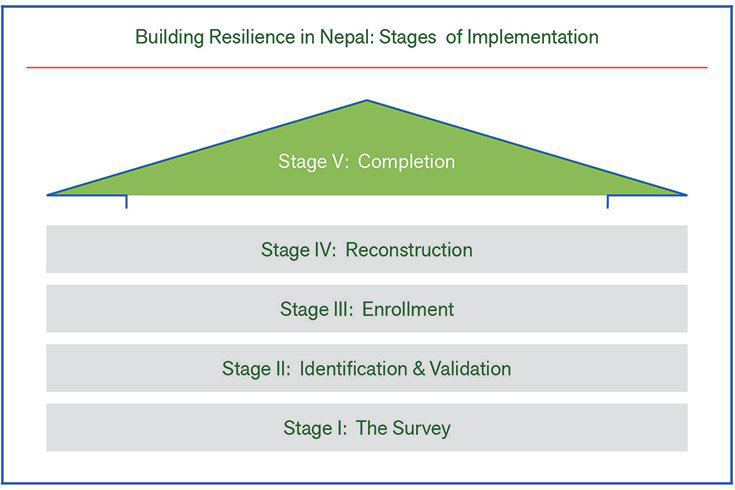DISASTER STRIKES: The Walls Came Tumbling Down
On April 25, 2015, a 7.8 magnitude earthquake struck Nepal. Following a second strong earthquake on May 12 (7.3 magnitude), and a sequence of aftershocks, the Government of Nepal (GoN) reported the death toll at approximately 8,700 and those injured at 25,000. The earthquakes also triggered extensive landslides and avalanches causing further damage and disruption in essential services. The earthquake sequence destroyed 490,000 houses -- mostly traditional mud-brick and mud-stone houses built and occupied by the rural poor -- and rendered another 265,000 houses at least temporarily uninhabitable. The immediate impact on poverty, livelihood and output has been severe. According to official estimates, in the most heavily affected districts (which includes Kathmandu), about 9.4 million people have been affected by the disaster.
RAPID RESPONSE: Digging through the rubble
Post Disaster Needs Assessment
Upon request from the National Planning Commission (NPC) of the Government of Nepal, the World Bank, United Nations Development Program (UNDP), European Union (EU), the Asian Development Bank (ADB), and the Japan International Cooperation Agency (JICA) supported a Post Disaster Needs Assessment (PDNA). Numerous international partners were actively engaged in providing teams to help carry out the PDNA. This Assessment, led by the NPC to determine the impact of the earthquake events, was completed on June 15, 2015 (within one month of its launch) with impressive, efficient and extensive collaboration.
The PDNA found that total damages and losses amounted to about US$7 billion, with reconstruction needs of about US$6.7 billion, or about 30 percent of GDP. The largest single need identified in the PDNA was for housing and human settlements -- 755,000 houses in Nepal were found to be destroyed or significantly damaged -- accounting for US$3.27 billion or almost half of the total reconstruction needs. This is based on estimates of the areas affected and of the proportion of assets to be replaced or rebuilt.


